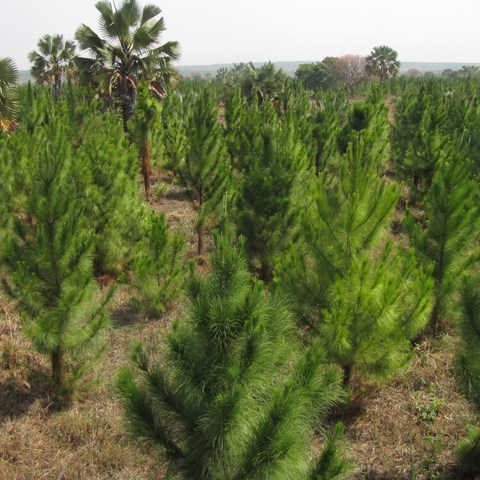This is an assessment guide for social benefits of carbon forestry projects that offers help for different target groups. The guide can be used to assess the quality of projects that aim to store carbon through tree planting, restoration or forest conservation and sell the carbon credits generated, so called carbon forestry projects.
The guide has a particular focus on projects in low/middle income countries and the potential of such projects to have positive impacts on local communities. Many previous projects have not taken earlier experiences or research into account when designing new initiatives.
This has led to a lot of problems and risks with carbon forestry projects. Minimizing such problems and risks is the focus of this guide. We also want to point out that carbon forestry investments should never be used instead of lowering emissions – see vocabulary and list of references for explanations to why 'carbon offsetting’ is seriously questioned by science.
However, if social sustainability perspectives are mainstreamed to be at the core of carbon forestry projects, they do have the potential of contributing with important social, economic and environmental benefits to local communities (if implemented in the right place and at the right time). In general, such benefits tend to be much more likely in projects using other methods than monoculture plantations, such as agroforestry projects or projects including pruning techniques. Such benefits include erosion control if areas are indeed prone to erosion, shading crops in the dry season and access to fruits and other products from the trees where such trees are planted, access to timber and firewood from prunings, thinnings and harvesting and wider benefits of e.g. agroforestry. Programs that include further benefits to communities, such as using support groups, encouraging savings-and-loans associations, introducing wood-saving stoves and having a set of trainings and support to livelihood activities are even more beneficial.
Target groups
We have developed guides for different target groups that deal with carbon forestry and want to ensure they contribute to social benefits:
Consumers who want to invest in tree planting
Companies that want to buy carbon credits
Public agencies that want to buy carbon credits
Carbon credit retailers who want to assess quality of projects to sell credits from
Developers of standards who want to improve standards
Project developers and implementors who design carbon forestry projects
The development of this guide has been funded by the Swedish research-funding agency Formas [FR 2019/0004], from a call on turning “research into practice”. The funding agency and the researchers behind the guide are independent and driven by no other interest than making existing research more easily available and practically useful, in order to increase the likelihood of benefits for local communities from carbon forestry projects. The researchers behind this guide do not issue any kinds of assurances that actors referring to this guide in fact use it as intended - simply referring to the guide does not mean that a project will bring positive social impacts. We also do not issue any certificates or assurances that projects assessed using this guide do not have any negative impacts on local communities.
The researchers are grateful to the following standards, companies, agencies, organisations and private persons who have provided valuable input through interviews and workshops on how the guide can become useful: Plan Vivo, Zero Mission, South Pole, Sida, the Swedish Energy Agency, Vi-skogen, Arvid Nordquist, and Robert Höglund. These stakeholders have however not influenced the guide in terms of its core content.
Vocabulary
Scientific References
